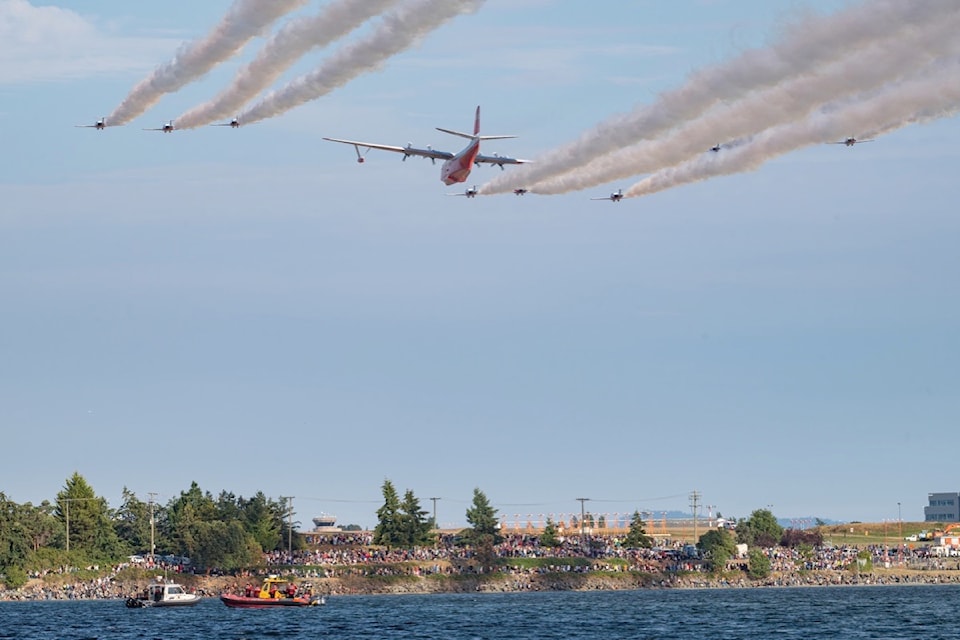The Hawaii Mars “yoga move” onto dry land is anticipated Wednesday (Aug. 14) afternoon, says the Save the Mars project lead.
“It’s more difficult than flying the plane,” BC Aviation Museum representative Richard Mosdell told the Peninsula News Review.
With comments such as “out of this world” and “tears of joy” still resonating from Sunday’s historic final flight and landing, Mosdell headed for the dock near the Institute of Ocean Sciences Wednesday morning with a goal to get the water bomber from Patricia Bay onto dry land at the adjacent Canadian Coast Guard dock.
Mosdell references yoga, known for its sometimes complicated positions, as the giant water bomber requires several manoeuvres by the contractor hired to make it happen. Known for its house moves in Greater Victoria, Nickel Brothers is expected to start the process in North Saanich after 2 p.m. with a target of having the plane on the ramp by 4 p.m. – optimal tide time.
“It starts today, it's been a massive preparing operation,” Modsell said.
Once it’s up on the Coast Guard base, in its massive reserved parking spot, it will take about five days to build a cradle for the massive aircraft, which will make a midnight move across the base, West Saanich Road and Victoria International Airport land to arrive at the museum sometime next week.
Modsell led the campaign that ended with Coulson Aviation announcing a donation of its 1940s Second World War-era converted water bomber to the museum in spring 2023.
Hawaii Mars is one of two remaining Martin JRM-3 Mars water bombers. It flew cargo between Hawaii and the Pacific Islands during the Second World War and supported the Korean War with medical transport between Hawaii and California before transitioning to cargo operations. They were sold to a consortium of B.C. timber companies in 1958 and converted into the world’s largest water bombers to fight forest fires, carrying 27,000 litres per drop.
Coulson bought them in 2007, marking the start of its fixed-wing air tanker operations for aerial wildfire support. Coulson retired its Mars water bombers in 2015. The Philippine Mars is heading to the Pima Air and Space Museum in Tucson, Ariz.
Once Hawaii Mars is settled at the BC Aviation Museum as part of its existing BC Wildfire Aviation Exhibit, the museum plans to offer an open format that allows visitors to experience the Hawaii Mars up close and personal, including the opportunity to sit in the four-storey cockpit. The goal is to fundraise and build a new hangar dedicated to wildfire fighting.
The museum is currently fundraising for the costs associated with the Mars rescue. Find the online fundraiser at gofundme.com/f/save-the-hawaii-mars.
Two separate crews are documenting the process – one for Coulson and one for the BC Aviation Museum archives – including the epic final flight in formation alongside the Canadian Forces Snowbirds.
The final flight and landing was so popular the BC Aviation Museum website www.bcam.net crashed, Mosdell noted, adding the live stream of the event is at 165,000 views and growing at 2,000 to 5,000 an hour.
Tuesday, the YouTube video was the No. 1 among those made in B.C.


